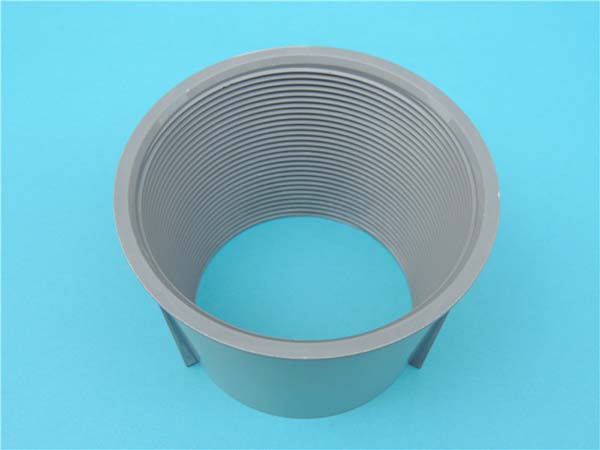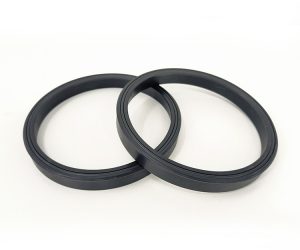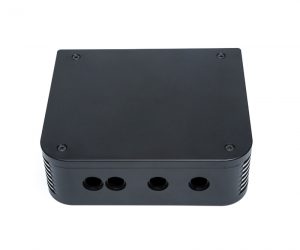1. Introduction to Bakelite Plates
In the vast realm of materials science, Baquelite plates have carved out a unique and significant niche. Baquelite, the world's first synthetic plastic, was invented by Leo Baekeland in 1907. This revolutionary material was a game - changer, combining the heat - resistance and insulating properties that were previously hard to achieve in a single substance.
Bakelite plates are made from Bakelite, a thermosetting phenol - formaldehyde resin. Once formed, they cannot be remelted or reshaped by heating, which is a characteristic that sets them apart from many other plastics. These plates have a wide range of applications across various industries, from electrical and electronics to automotive and consumer goods.
For Yigu Technology example, in the early days of radio and television, Bakelite plates were commonly used as insulating components. Their excellent electrical insulation properties helped to prevent short - circuits and ensure the safe operation of these devices. In the automotive industry, they found use in parts such as distributor caps and switch housings, thanks to their heat resistance and durability.
If you are involved in any of these industries or are simply a hobbyist working on a DIY project that requires a reliable, heat - resistant, and insulating material, understanding Bakelite plates is crucial. This article aims to be your comprehensive guide, helping you solve problems related to choosing, using, and maintaining Bakelite plates. Whether you are confused about the different grades available in the market, concerned about their compatibility with other materials, or want to know how to identify a genuine Bakelite plate, you'll find the answers here.
3. Physical and Chemical Properties of Bakelite Plates
3.1 Physical Attributes
Bakelite plates typically have a dark, often black or brownish - black color. This characteristic color is due to the nature of the phenol - formaldehyde resin used in their production. In terms of texture, they are smooth and hard. The hardness of Bakelite plates is relatively high, which allows them to maintain their shape under normal usage conditions.
When compared to other common plates such as acrylic plates and PVC plates, Bakelite plates show distinct differences. Acrylic plates are known for their transparency and relatively lower hardness, making them more prone to scratching. PVC plates, on the other hand, are more flexible than Bakelite plates.
Let's take a look at the following table comparing some physical properties of Bakelite plates with acrylic and PVC plates:
| Property | Bakelite Plates | Acrylic Plates | PVC Plates |
| Hardness (Shore D) | 85 - 90 | 70 - 75 | 60 - 70 |
| Density (g/cm³) | 1.3 - 1.45 | 1.17 - 1.20 | 1.38 - 1.58 |
| Transparency | Opaque | Transparent | Translucent to opaque |
| Flexibility | Rigid | Semi - rigid | Flexible (depending on formulation) |
The high hardness of Bakelite plates, as indicated by the Shore D hardness scale, makes them suitable for applications where wear - resistance and dimensional stability are crucial. For example, in electrical switch housings, the hard surface of Bakelite plates can withstand repeated mechanical operations without deforming or getting damaged easily. The density of Bakelite plates, which is in the range of 1.3 - 1.45 g/cm³, gives it a certain mass and sturdiness, contributing to its overall durability.
3.2 Chemical Resistance
Bakelite plates exhibit excellent chemical stability. They are highly resistant to a wide range of chemicals, including many acids, alkalis, and organic solvents. For instance, they can resist the corrosive effects of dilute sulfuric acid and sodium hydroxide solutions. In laboratory tests, when a sample of Bakelite plate was immersed in a 10% sulfuric acid solution for 24 hours at room temperature, no visible signs of degradation or chemical reaction were observed. After the immersion, the physical properties of the Bakelite plate, such as its hardness and electrical insulation, remained almost unchanged.
This chemical resistance makes Bakelite plates ideal for use in chemical processing equipment, especially in components that come into contact with various chemical substances. In the production of certain chemicals, Bakelite plates can be used as insulating materials in electrical equipment within the processing plant, ensuring the safe operation of the equipment even in a chemically - aggressive environment. They are also resistant to many common organic solvents like ethanol and acetone. This property allows them to be used in applications where exposure to these solvents is possible, such as in the manufacturing of coatings or adhesives where these solvents are often used.
However, it's important to note that while Bakelite plates are highly resistant to many chemicals, they may not be completely immune to extremely strong or concentrated chemicals. For example, concentrated nitric acid or hydrofluoric acid can cause damage to Bakelite plates over time. So, when choosing Bakelite plates for a specific application, it's essential to consider the exact chemical environment they will be exposed to.
4. Manufacturing Process of Bakelite Plates
4.1 Raw Materials Involved
The manufacturing of Bakelite plates starts with carefully selected raw materials, each playing a crucial role in determining the final properties of the product. The primary raw materials are phenol and formaldehyde. Phenol, a white crystalline solid with a distinct odor, is a key component in the formation of the phenolic resin. It provides the basic structure for the polymer chain. Formaldehyde, a colorless, pungent - smelling gas, reacts with phenol in a condensation polymerization reaction to form the thermosetting phenol - formaldehyde resin.
In addition to phenol and formaldehyde, fillers are often added. Common fillers include wood flour, cotton fibers, or glass fibers. Wood flour, for example, is a fine powder made from wood. When added to the resin mixture, it can improve the mechanical properties of the Bakelite plate, such as its tensile strength and impact resistance. It also helps to reduce the cost of production. Cotton fibers can enhance the flexibility and toughness of the plate to a certain extent. Glass fibers, on the other hand, are excellent for increasing the rigidity and heat - resistance of the Bakelite plate. A study has shown that adding 10% glass fibers to the Bakelite formulation can increase its heat - deflection temperature by about 20 - 30°C.
The quality of these raw materials is of utmost importance. High - purity phenol and formaldehyde ensure a more complete polymerization reaction, resulting in a resin with better properties. Impurities in the raw materials can disrupt the chemical reaction, leading to a resin with lower strength, reduced chemical resistance, and inferior electrical insulation properties. For Yigu Technology example, if the phenol contains trace amounts of impurities like cresols, it can affect the cross - linking density of the resin, making the Bakelite plate more brittle and less resistant to heat.
4.2 Step - by - Step Production
- Mixing of Raw Materials: First, the phenol and formaldehyde are mixed in specific ratios, usually with a catalyst added to speed up the reaction. The catalyst is typically an acid or a base, depending on the desired reaction rate and the properties of the final product. For example, hydrochloric acid or ammonia can be used as catalysts. If a faster reaction is required, a stronger catalyst concentration may be used, but this needs to be carefully controlled to avoid over - reaction. The fillers are then added to the mixture. The mixing process is carried out in high - speed mixers to ensure uniform distribution of all components. This uniformity is crucial as it directly impacts the consistency of the plate's properties. 不均匀 mixing can lead to areas with different mechanical and electrical properties within the plate, which is unacceptable for most applications.
- Pre - curing: The mixed material is then pre - cured at a relatively low temperature, usually around 80 - 120°C. This pre - curing stage partially polymerizes the resin, making it easier to handle and shape. During this process, the resin begins to form a semi - solid state, and the fillers become more firmly bonded to the resin matrix. The degree of pre - curing is carefully monitored. If it is under - cured, the material may not have enough strength during the subsequent processing steps. If it is over - cured, the material may become too rigid to be molded properly.
- Molding: The pre - cured material is placed into a mold of the desired shape for the Bakelite plate. The mold can be made of metal, such as steel or aluminum, depending on the complexity of the shape and the production volume. The mold is then closed, and pressure is applied. The pressure can range from 10 - 50 MPa, depending on the type of plate and the manufacturing process. For example, for a thick - walled Bakelite plate used in high - voltage electrical insulation, a higher pressure may be applied to ensure better consolidation of the material and to eliminate any voids. At the same time, the temperature is increased to a higher level, typically 150 - 200°C. This combination of heat and pressure helps the material to flow and fill the mold cavity completely, taking on the shape of the mold.
- Final Curing: After the material has filled the mold, it undergoes final curing at the elevated temperature for a specific period. This final curing stage completes the polymerization process, forming a three - dimensional cross - linked structure in the resin. The cross - linking is what gives Bakelite its characteristic hardness, heat - resistance, and dimensional stability. The curing time can vary from a few minutes to several hours, depending on the thickness of the plate and the curing conditions. For a thin Bakelite plate (less than 5 mm thick), the curing time may be around 10 - 30 minutes, while for a thick plate (more than 20 mm thick), it could be 1 - 3 hours.
- Cooling and Finishing: Once the curing is complete, the mold is cooled down. The cooling process should be gradual to prevent thermal stress from causing cracks or warping in the plate. After cooling, the Bakelite plate is removed from the mold. It may then undergo finishing operations such as trimming to remove any excess material, sanding to smooth the surface, and drilling holes if required for specific applications. These finishing operations are essential to meet the exact dimensional and surface quality requirements of the end - users.
7. How to Identify Real Bakelite Plates
7.1 Visual Inspection
One of the initial steps in identifying real Bakelite plates is through visual inspection. Real Bakelite plates often have a deep, rich color. The most common colors are black, dark brown, or sometimes a reddish - brown. These colors are a result of the chemical composition of the phenol - formaldehyde resin and the manufacturing process. For Yigu Technology example, a well - made Bakelite plate used in an antique radio component will typically have a consistent, deep black color that has a certain luster to it.
When looking at the texture, genuine Bakelite plates have a smooth and uniform surface. There should be no visible air bubbles, cracks, or unevenness. In contrast, counterfeit or low - quality imitation Bakelite plates may have a rough texture, with small pits or an inconsistent finish. If you look closely at the edges of a real Bakelite plate, they will be cleanly cut and smooth, while fake ones may have ragged or chipped edges.
The surface of real Bakelite also has a unique semi - gloss to high - gloss finish, depending on the manufacturing process and any post - treatment. This gloss is not overly shiny like some modern plastics but has a more subdued, natural look.
7.2 Physical Tests
Physical tests can provide more conclusive evidence of a Bakelite plate's authenticity. One of the simplest physical tests is the density test. Bakelite plates have a density in the range of 1.3 - 1.45 g/cm³. To perform this test, you will need a scale to measure the mass of the plate sample accurately and a method to measure its volume. For a regular - shaped plate, you can measure its length, width, and thickness and calculate the volume using the formula V = length × width × thickness. Then, divide the mass by the volume to get the density. If the calculated density falls within the expected range for Bakelite, it is likely to be genuine. For Yigu Technology example, if a plate sample has a mass of 130 grams and its calculated volume is 100 cm³, the density is 1.3 g/cm³, indicating it could be a real Bakelite plate.
Another physical test is the hardness test. Bakelite plates are relatively hard and can be tested using a simple scratch test. Use a common object like a fingernail or a copper coin. A real Bakelite plate should not be easily scratched by a fingernail. If you use a copper coin to scratch the surface gently, it may leave a very faint mark, but the plate's surface should not be significantly damaged. In contrast, a softer, imitation material may be easily scratched by these objects.
7.3 Chemical Tests (if necessary)
In some cases, especially when dealing with more complex or high - stakes applications, chemical tests may be necessary to confirm the authenticity of a Bakelite plate. Chemical tests for Bakelite are based on the unique chemical properties of the phenol - formaldehyde resin.
One common chemical test involves using a small amount of concentrated sulfuric acid. A tiny drop of concentrated sulfuric acid is carefully applied to an inconspicuous area of the plate. If it is a real Bakelite plate, the resin will char slowly, turning black. This is due to the decomposition of the phenol - formaldehyde resin under the influence of the strong acid. However, this test should be carried out with extreme caution, as concentrated sulfuric acid is highly corrosive and can cause serious harm to skin, eyes, and other tissues. It should only be performed by trained professionals in a well - ventilated laboratory setting, wearing appropriate personal protective equipment such as gloves, goggles, and a lab coat.
Another chemical test could involve using an infrared (IR) spectrometer. IR spectroscopy can analyze the chemical bonds present in the material. Bakelite has characteristic absorption bands in the IR spectrum corresponding to the phenol - formaldehyde resin structure. By comparing the IR spectrum of the test sample with a known spectrum of Bakelite, it is possible to determine its authenticity. However, this requires access to specialized and expensive equipment, as well as expertise in interpreting IR spectra.



